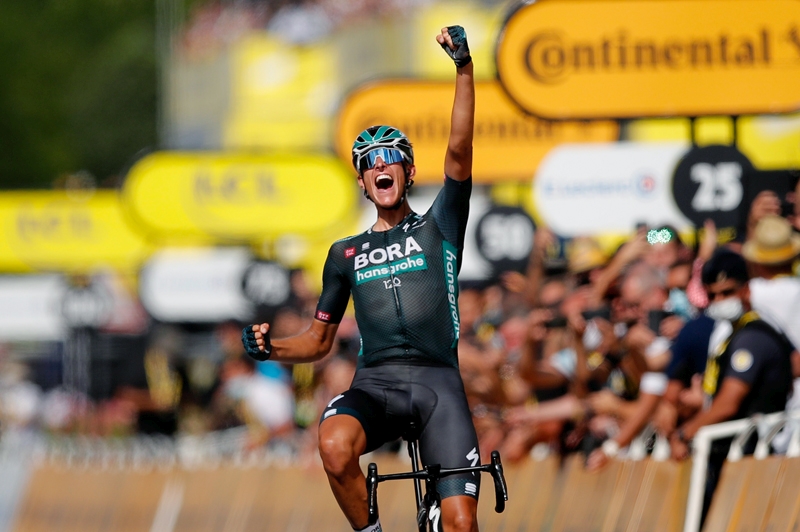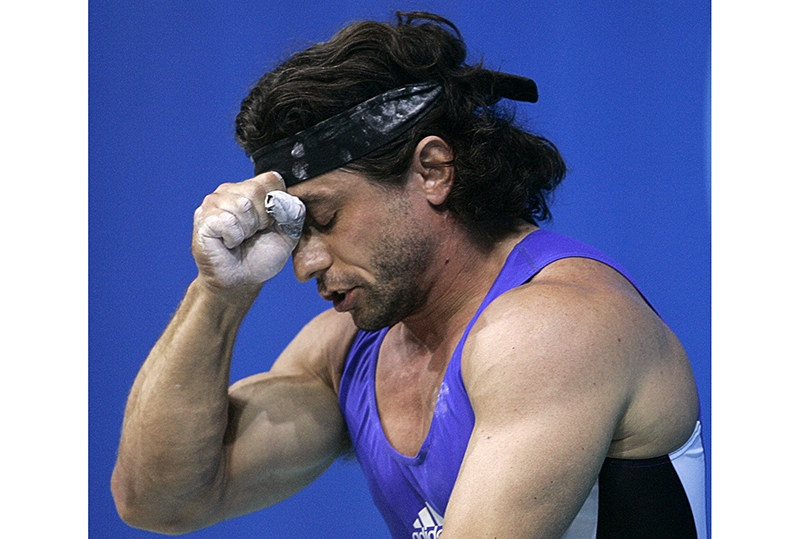You are viewing 1 of your 1 free articles. For unlimited access take a risk-free trial
Mental imagery for physical people
How recreating all-sensory experience can profoundly affect your performance
A few years ago I remember seeing a close-up shot of former world motor racing champion Damon Hill in his Formula One car as his head swayed from side to side. There was nothing new about TV producers wanting to get closer to the action, but the odd thing about this shot was that Hill was sitting in a stationary car, waiting to exit the garage in an attempt to qualify for the race. In fact there was a simple explanation for Hill’s behaviour: like many other top sportspeople, he was using the time leading up to a performance to mentally rehearse and (in his case no doubt) imagine steering the correct racing line through each corner.On top of the time spent honing skills and developing physical readiness, studies of top performers have shown that the élite from a variety of different sports complete many laps of the track, lengths of the pool or throws of the javelin in their minds before major competitions.
The aims of this article are to encourage more athletes to use and develop their imagery skills and (for those who are already converts) to advise on how to use these skills to maximum effect. It is clear that creating, or recreating, an all-sensory experience can have profound effects on physical performance and psychological functioning. Once learned, imagery can be applied in many different ways to aid sports performers, and is one of the most regularly used tools of the sport psychologist. However, recent research evidence suggests that to achieve maximum benefits athletes and coaches should select the content of their images very carefully.
I will not spend too long making the case for using mental imagery, since scientific research strongly supports its use in sport as an adjunct to physical practice. However, sceptics who need convincing may wish to consider the following evidence:
- First, élite athletes and coaches use imagery regularly(1). Do you really think world-class performers would devote time to a technique that didn’t aid their performances?
- Secondly, case studies of the use of imagery programmes tailored to individual needs have demonstrated some dramatic performance improvements(2);
- Finally, and most importantly, a wealth of controlled scientific studies have shown that imagery can significantly benefit the learning and performance of a variety of sports skills(3).
Scientists have now turned their attention from the question of whether imagery works – given the strong evidence that it does – to the question of how it works. On this issue opinion remains divided and a healthy debate continues. Some experts believe that small neuromuscular ‘firings’ that have been demonstrated in some research studies provide sufficient feedback from imagined stimuli to allow for changes in performance.
A blueprint for performance
Others argue that imagery can help to develop a mental blueprint for performance, much like planning what you are going to say before making an important telephone call. Another line of evidence suggests that imagery may work more indirectly – facilitating changes in someone’s psychological state by building confidence, promoting motivation and reducing performance anxiety.At present, the exact mechanisms by which imagery works remain unclear, although recent work using brain imaging techniques has advanced our knowledge by confirming that the right hemisphere of the brain is the primary imagery centre.
If you watch children playing, you can rapidly appreciate how creative and imaginative they are. As children play with dolls and toys they create their own inner worlds, thereby engaging the right hemispheres of their brains. Unfortunately, much systematic education focuses on logical and analytical processes, which use the left hemisphere and tend to be more highly valued by adults.
The trouble is that without constant practice the brain’s imagery centre reacts in much the same way as your muscles do if you stop training – ie it atrophies. Again using a body analogy, when you return to using this part of your brain after a long lay-off, it’s like doing that first exercise session all over again. However, as with physical exercise, the more you train, the faster you adapt and the easier it gets.
Although imagery can be applied in very dynamic situations, it is best to learn how to do it in quiet, relaxed, non-competitive settings. You need to start by relaxing – closing your eyes and focusing on deep rhythmical breaths. You cannot afford to be half-hearted, so commit yourself to the process and try to decide beforehand what you are going to imagine. Some people might even decide to record a series of instructions onto a cassette tape to help direct their images.
A three-stage development plan
Sport psychologist Rainer Martens(5) suggested that, in developing a systematic approach to using imagery, people should first work on increasing overall sensory awareness. A fundamental point that must be made at this juncture is that visualisation and imagery are not one and the same; imagery should involve far more than visualisation, including the feelings of movements, sounds, emotions and, in some cases, even smells.A cricket batsman, for example, might attempt to become more aware of sensory process by recalling the important visual environmental features, as well as the sound of the bowler running-in and the noise the ball made through the air. He may recall the feel of swinging the bat and making contact with the ball. The subsequent sounds of bat on ball and the call of his partner to run may also be considered. The sense of control as the ball reached the boundary, a feeling of determination and the smell of freshly mown grass may help to stimulate all the senses. So Martens proposes a first stage dedicated to appreciating things that the individual may have come to take for granted.
The next step is to develop vividness. It is true that some people are able to recall or create very clear and vivid images, while others may struggle to get an image at all. With practice, though, most people are able to sharpen their images so that recognisable sensory experiences are evident. This is the stage to be creative and experiment by using scenes and experiences that are very familiar to you. These exercises do not need to be sport-specific at first, as the general idea is to promote overall clarity. You might like to try exercise 1, above, to help develop vividness.
The final stage of your development plan involves control. If you are mentally rehearsing what you are going to do, it is important to have control over your images. That is because imagery can be destructive as well as helpful. If, for example, a golfer is imagining the path of the ball on the green but continually sees herself missing the putt, this is hardly likely to help. The great thing about imagery is that, even if the golfer has missed putts in reality, imagery provides an opportunity to correct errors.
This stage is more sport specific and should incorporate your desired outcome. You should feel the movement and see a positive result, such as the golf ball following the correct path and entering the hole. If you do start imagining negative outcomes, try to recall a previous success – or even watch another person successfully complete the skill and try to replicate this in your mind, with yourself in the role of successful performer. You might like to try exercise 2, opposite, to develop control.
Although the most obvious application of imagery is in the learning and performing of sport skills, there are many other ways to use the technique. For example, imagery can also be used to practise strategies, manipulate levels of arousal, manage stress, build confidence, deal with pain and periods of injury and develop an appropriate focus(3).
Recently researchers have suggested that, for maximum effect, athletes should match the content or type of imagery with the desired outcome(6). Towards this end, you should think carefully about the components of your imagined experiences and ask yourself what you want to gain. Do you seek to facilitate learning and performance of skills and strategies, or are you attempting to build confidence or even psych yourself up?
The five main categories of imagery have been identified as follows:
- Motivational-specific (MS) – This involves seeing yourself winning an event, receiving a trophy or medal and being congratulated by other athletes. MS imagery may boost motivation and effort during training and facilitate goal-setting, but is unlikely on its own to lead directly to performance benefits;
- Motivational general-mastery (MG-M) – This is based on seeing yourself coping in difficult circumstances and mastering challenging situations. It might include maintaining a positive focus while behind, and then coming back to win. MG-M imagery appears to be important in developing expectations of success and self-confidence;
- Motivational general-arousal (MG-A) – This is imagery that reflects feelings of relaxation, stress, anxiety or arousal in relation to sports competitions. There is good evidence to suggest that MG-A imagery can influence heart rate – one index of arousal – and can be employed as a ‘psych-up’ strategy;
- Cognitive specific (CS) – This involves seeing yourself perform specific skills, such as a tennis serve, golf putt or triple-toe-loop in figure skating. If learning and performance are the desired outcomes, evidence suggests that CS imagery will be the most effective choice;
- Cognitive general (CG) – This involves images of strategy and game plans related to a competitive event. Examples could include employing a serve-and-volley strategy in tennis or a quick-break play in basketball. Case studies support the use of this type of imagery, although controlled experimental evidence is still needed.
In designing imagery training programmes, I like to follow the FITT principle (see below), which has often been associated with physical training.
Exercise 1: Peeling an orange
Imagine you have an orange clasped in your hands. See the bright colour, feel the texture of the orange and imagine squeezing the fruit with your fingers. Now imagine peeling the orange by digging your thumb beneath the surface of the skin. Imagine your fingers and thumb working to remove the outer layer of the fruit. Feel the zestful spray as the juice begins to run onto your hand. Try to imagine the distinctive aroma. Once you have fully peeled the orange, imagine dividing it into segments before eating it. Recall the taste of the fruit as vividly as you can.
Alternatively, you could stare at the flame of a candle – or indeed any object – for a few seconds and then try to see the image again in your mind’s eye. Close your eyes and try to recreate the image as clearly as you can. Focusing on your own hands is a particularly good exercise, as you can develop further movement awareness by closing your eyes, creating a new shape with your hands and, without looking, trying to imagine how your hands look. Then open your eyes and check how close you were to the real image.
You might try using imagery after a performance, as this is a time when you tend to remember more clearly and are often most able to recall the vividness of the situation and what happened.
Newsletter Sign Up
Testimonials
Newsletter Sign Up
Coaches Testimonials
Keep up with latest sports science research and apply it to maximize performance
Today you have the chance to join a group of athletes, and sports coaches/trainers who all have something special in common...
They use the latest research to improve performance for themselves and their clients - both athletes and sports teams - with help from global specialists in the fields of sports science, sports medicine and sports psychology.
They do this by reading Sports Performance Bulletin, an easy-to-digest but serious-minded journal dedicated to high performance sports. SPB offers a wealth of information and insight into the latest research, in an easily-accessible and understood format, along with a wealth of practical recommendations.
*includes 3 coaching manuals
Get Inspired
All the latest techniques and approaches
Sports Performance Bulletin helps dedicated endurance athletes improve their performance. Sense-checking the latest sports science research, and sourcing evidence and case studies to support findings, Sports Performance Bulletin turns proven insights into easily digestible practical advice. Supporting athletes, coaches and professionals who wish to ensure their guidance and programmes are kept right up to date and based on credible science.









